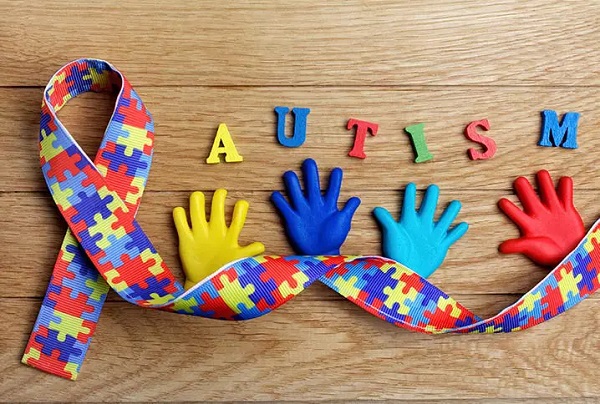
The Beginning - We Embraced Autism
Did you know? Many children with autism, like Jayden, often show remarkable progress when they find their perfect learning environment and receive the right support at the right time.
Key Points
- Early signs of autism can be subtle and easily missed
- Parental intuition often plays a crucial role in seeking help
- The journey from diagnosis to acceptance is unique for every family
- Finding the right educational environment can be transformative
- Support from other parents can be invaluable
Our Journey Begins
It is raining outside – a soft, steady patter against the window. Kate's just brewed a steaming pot of Kenyan tea, its rich aroma filling the kitchen. Jayden, our 9-year-old whirlwind, has gleefully battered my bread into a crumbly masterpiece. He loves doing that, and honestly, I love watching him. Now, I'm settled at my writing desk, tea in hand, ready to share a story. It is about Jayden - not because of the bread (though that's a bonus), but because he is proof of what "coming from far" really means. And I can't leave out Kate, my beautiful wife - she's the glue who's pieced Jayden's world together with patience and love until it fits just right.
The Early Signs
Five years ago, life looked different. We were in a long-distance marriage – tough doesn't even cover it. Jayden was about to start Reception year at a mainstream primary school, and Kate would call me, her voice trembling. "He can't talk, can't read, can't even use the toilet. I don't know if he's ready." He'd been at nursery, but it felt like they were just keeping him safe, not helping him grow. It was as if Jayden was hiding, waiting for us to find him.
"Babe, relax," I'd say. "He's young. He will talk when he's ready". Looking back, Kate knew I didn't get it. I'd missed the early signs—blinded by distance and optimism. Reception year came, and we hoped for miracles: words tumbling out, playtime chatter with friends. Instead, Jayden stayed silent – he was non-verbal. He struggled to connect with peers and keep up with classwork.
The Diagnosis Process
Later in the first term, teachers realized Jayden needed more support, preferrable 1-to-1. The school stepped in, linking us with their Special Educational Needs Coordinator (SENCO) for an autism assessment. Then, the unexpected hit: Jayden was diagnosed with autism, severe language delay, and global developmental delay.
We didn't know much about autism then. The news felt like the ground caving in. Would he ever speak? Have friends? Live independently? Denial crept in, then questions, then desperate searches for answers—until all we had left was a little boy who needed us. Kate cried a lot, wrapping Jayden in tight hugs often. I'd join them, lying there quietly, overwhelmed. It was scary.
Finding Our Path
Mourning a diagnosis is normal, but lingering in denial isn't. In our culture, complex struggles often get brushed off with "I'll pray for him" or "Who's cursed us?" But Kate and I knew Jayden's wellbeing depended on us showing up—connecting him to the right support and interventions, stepping into his world and understanding it. Denial only delays help, and we refused to let it trap us.
So, we dove in. We read everything—books, articles, blogs. We talked to experts in health and education. We joined autism support groups, soaking up wisdom from parents who'd walked this path. Slowly, we pieced together what being on the spectrum meant for Jayden. It was exhausting - anger flared when answers didn't come, fear spiked as we juggled family, work, and his needs. Jayden's silence made it harder; he'd hold everything in at school, only to let it all out the moment we picked him up, with meltdowns and tantrums. Overwhelmed, Kate and I would take long, quiet walks, teetering on edge but holding space for each other.
The Turning Point
The more we learned, the more we accepted. Autism wasn't a label to box Jayden in—it was part of who he is. Our new plan? Embrace it. Help him thrive. We worked with the school, healthcare professionals, and our local authority to transition him to a special school. The first day he went to a special school felt like a weight taken off our shoulders. That evening when we picked him up, he seemed calmer—almost at ease – like he had gotten his perfect space!
A month in, magic happened. Jayden started saying words clearly. He had also picked up sign language like a pro. Upon seeing this, Kate's face lit up, her smile wide and real. That's when it hit me: we were happy with Jayden's diagnosis, and his progress is making us believe. We could dream about his future again.
Key Lessons from Our Journey
Patience is key - Parents need time to process autism. It's okay to feel the weight—just don't let it bury you.
Knowledge is power - Educate yourself. Understanding autism turns fear into action.
Community lifts you up - Groups like Beautiful Brains connect you with parents who get it—real stories, real hope.
Find your joy - An autism diagnosis can dim your light if you let it. Step outside, breathe, and reclaim what makes you smile.
Looking Forward
Sometimes, it feels like we're already there. The Jayden battering my bread today chats fluently, loves math, and dreams of being an engineer. How'd we get here? That's another story—but first, let me share what stood out on this journey.
This beginning wasn't easy, but it's ours. And with every step, we're helping Jayden build a limitless life—one battered loaf at a time.
"The journey of a thousand miles begins with a single step, and sometimes that step is accepting help and embracing change."
Want to learn more about specific interventions and strategies that helped Jayden? Check out our next article on effective autism support methods!